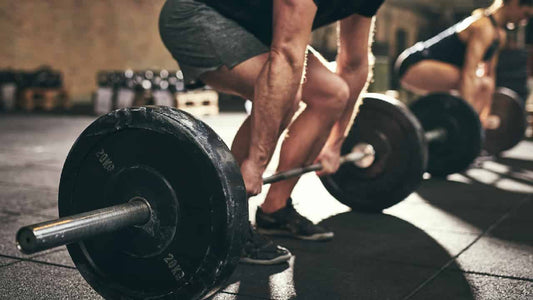After a brutal leg day, your legs are probably feeling like jello, but when you kill your core during intense ab training, do you ever think your abs need rest, too?
Like every muscle in the body that you train during a workout, your core muscles need sufficient rest if you want them to grow and get stronger.
Although your abs may need less rest than other muscles, if you’re going to see long-term results, you have to allow them to recuperate.
So, we’re breaking down the basics of core training and how you can maximize both your training routine and your recovery.
Anatomy Of The Core
Contrary to what most people think, the “abs” aren’t composed of a single muscle. Much like the biceps and triceps, they’re composed of several muscles that make up the “core.” The core muscles extend from the back of your neck down to your pelvic area and include muscles such as:
- External abdominal oblique
- Internal abdominal oblique
- Rectus abdominis
- Transverse abdominis
- Tendinous inscriptions
The abdominal wall muscles are layered like sheets of paper and aren’t capable of working individually. Instead, they function as a single unit during upright movements, and the deep abdominal muscles work synergistically to control the movement of the spine, rib cage, and pelvis.
So, if you want to efficiently and effectively train your core, you need to do movements that integrate every muscle—that is, muscles of the hips, trunk, and shoulders. In doing so, you’re increasing the strength and stability of passive tissues (spinal joint, bone structures) and active tissues (muscles surrounding the spine).
Training your abs and core should always include movements that improve core stability. This maintains a stable spine and, in turn, increases control of your center of gravity and leads to safer movements.
How To Maximize Core Training
1. Hit All Angles
While you were probably led to believe that you can crunch your way to a six-pack, the truth is, you can’t. While crunches may help increase core strength, you have to hit your core from every angle.
Research suggests that athletes can suffer from low back injuries due to core muscular endurance deficits 1. If you’re lifting heavy and not engaging the core, it can lead to spinal dysfunction and disorders, increasing the risk of injury, decreasing speed and power, and reducing energy output.
Make sure you’re training the big muscles and the smaller ones—they all work together to keep your core fit and functional. That means working the core on all planes of motion: front (anterior), back (posterior), and the sides (lateral).
2. Focus On Form
So many people compromise form for weight, and it will eventually backfire, landing you out of the gym with an injury. If you want to strengthen your core (and your entire body), you need to be performing exercises with proper technique. Not only does this reduce the risk of injury, but it means you’re hitting the muscles you intend to hit.
3. Reach Beyond Abs
Training your abs directly with ab movements is excellent for strengthening them, but incorporating full-body compound movements in your training program is another super effective way to target your abs.
Things like squats, deadlifts, cleans, Turkish get-ups, and Pollof presses. Rather than focusing on building core strength by doing crunches or leg raises, focus on functionality. A functional core translates into better overall performance in and out of the gym.
4. Start With Stability
Creating an unstable training environment is a great way to build strength in the small stabilizer muscles in your body, but before you do that, focus on executing movements properly in a stable environment. You want to perform each rep with the impeccable form before throwing in another element of challenge to avoid injury.
Best Ways To Boost Recovery
1. Supplement with Performance Lab Recover

Implementing recovery strategies is a great way to accelerate recovery and get back to training ASAP, but sometimes we need a little help. Performance Lab Recover is the smartest muscle fuel designed to replenish glycogen stores and fast-track recovery.
Featuring 40g of KarboLyn® carbohydrate and 20g of Oryzatein® organic brown rice protein per serving, Recover drives nutrients into your cells to power growth and repair.
While Recover isn’t meant to replace a healthy diet, it’s a nutritionally complete post-workout fuel for immediate and overnight nourishment.
2. Take An Ice Bath
You’ve probably been told to take a hot shower for achy muscles, but it turns out that a cold shower or ice bath may be more effective. Hopping into cold water can effectively reduce the symptoms of exercise-induced delayed onset muscle soreness (DOMS), usually experienced 24-72 hours after strenuous exercise. There are a few potential mechanisms for why cold water is so effective 2:
- Constricts blood vessels to enhance the flushing of waste products, such as lactic acid, from muscle tissue
- A decrease in metabolism can slow down the physiological processes associated with muscle soreness
- Cold temperatures help to reduce swelling and tissue breakdown
- Ice water immersion may shift lactic acid
3. Watch Your Diet
Although eating clean isn’t likely to strengthen your core, if you want to see any semblance of a six-pack, you first have to get rid of the layer of fat covering your abdominal muscles—and the best way to do that is through diet.
And eating the proper nutrients also facilitates muscle recovery post-workout. That means loading up on colorful fruits and vegetables for phytonutrients, protein for amino acids, carbs for glucose, and healthy fats for hormones and nutrient absorption.
If you want to build muscle and achieve your fitness goals, you have to refuel properly after a workout—it’s just as essential as the training itself. Nailing your post-workout nutrition not only supports muscle growth but fuels a quicker recovery, reduces muscle soreness (DOMS), boosts immune function, and replenishes glycogen stores—all critical components of priming your body for your next workout.
Final Thoughts
Dealing with soreness after a workout isn’t the most pleasant feeling, but it’s (usually) a sign that you hit the muscles you were going after. But if you aren’t keen on holding in laughs in fear of pain, make sure you’re implementing the proper recovery methods and eating to support growth and recovery.
References
- Borghuis J, Hof AL, Lemmink KA. The importance of sensory-motor control in providing core stability: implications for measurement and training. Sports Med. 2008;38(11):893-916.
- Lateef F. Post exercise ice water immersion: Is it a form of active recovery?. J Emerg Trauma Shock. 2010;3(3):302.
















